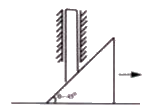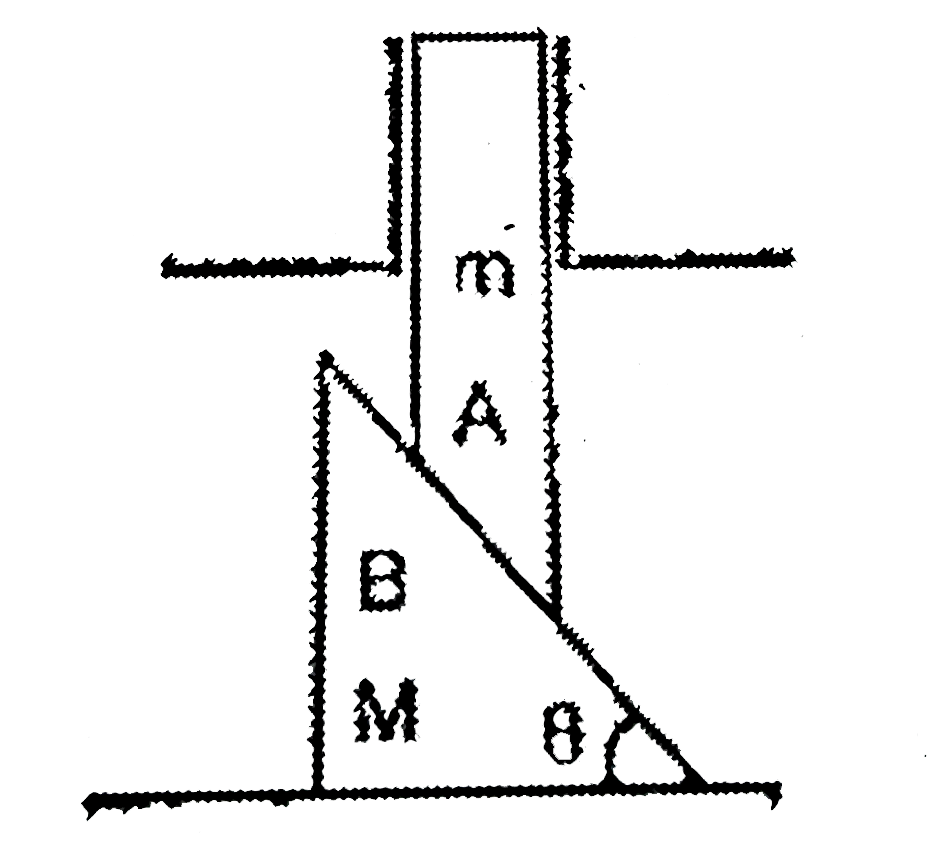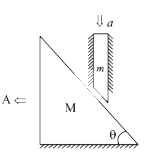A smooth vertical rod is released from rest such that it is constrained to move vertically ona smooth wedge (θ=45∘)
The work doneby the normal reaction on the rodis :
 Solution in Telugu
Solution in Telugu
mgx
−mgx2
−32mgx
−3mgx
The correct Answer is:B
Step by step video, text & image solution for A smooth vertical rod is released from rest such that it is constrained to move vertically ona smooth wedge (theta=45^(@)) The work doneby the normal reaction on the rodis : by Physics experts to help you in doubts & scoring excellent marks in Class 11 exams.
Topper's Solved these Questions
- BOOK - AAKASH SERIESCHAPTER - WORK -POWER-ENERGYEXERCISE - PRACTICE SHEET (EXERCISE-II KINETIC ENERGY, WORK-ENERGY THEOREM) (LEVEL-I STRAIGHT OBJECTIVE TYPE QUESTIONS)7videos
WORK -POWER-ENERGY
- BOOK - AAKASH SERIESCHAPTER - WORK -POWER-ENERGYEXERCISE - PRACTICE SHEET (EXERCISE-II KINETIC ENERGY, WORK-ENERGY THEOREM) (LEVEL-II STRAIGHT OBJECTIVE TYPE QUESTIONS)6videos
WORK -POWER-ENERGY
- BOOK - AAKASH SERIESCHAPTER - WORK -POWER-ENERGYEXERCISE - PRACTICE SHEET (EXERCISE-I WORKDONE BY FORCE) (LEVEL-I STRAIGHT OBJECTIVE TYPE QUESTIONS)7videos
WORK -POWER-ENERGY
- BOOK - AAKASH SERIESCHAPTER - VISCOSITY EXERCISE - Questions for Descriptive Answers3videos
VISCOSITY
- BOOK - AAKASH SERIESCHAPTER - WORK POWER ENERGYEXERCISE - EXERCISE - 361videos
WORK POWER ENERGY
Similar Questions
Two sopheres whose radii are in the ratio 1:2 are moving with theier velocities in the ratio 3:4. If their densities are in the ratio 3:2, the ratio of their kinetic energies is
04:51View SolutionIn case of a freely falling body, the ratio of kinetic energy at the end of the third second to increase in kinetic energy in th next three seconds is
02:50View SolutionA person of mas 50 kg carryign a load of 20 kg walks up a staircase. If the width and heigh of each step are 0.25 mand 0.2 m respectively, the work done by the man in walking up 20 steps is (g=10ms−2)
02:01View SolutionAn iron sphere of mass 20×10−3 kg falls through a viscous liquid with terminal velocity 0.5 m/sec. Find the terminal velocity of another iron sphere of mass 54×10−2 kg.
01:44View SolutionIf →A+→B=→Rand2→A+→B is perpendicular to →B then
05:17View SolutionA smooth block of mass m is held stationary on a smooth wedge of mass M and inclination θ as shown in figure .If the system is released from rest , then the normal reaction between the block and the wedge is
 04:38View Solution
04:38View SolutionA block of mass m is placed at rest on a smooth wedge of mass M placed at rest on a smooth horizontal surface. As the system is released
05:32View SolutionA uniform rod of length l is from rest such that it rotates about a smooth pivot. The angular speed of the rod when it becomes vertical is. .
08:11View SolutionA uniform straight rod is placed in vertical position on a smooth horizontal surface and released. As the rod is in motion, the centre of mass moves
08:53View SolutionA smooth vertical rod is released from rest such that it is constrained to move vertically on a smooth wedge (theta = 45^@) . When the wedge moves through a distance x , the speed of the rod is : .
01:56View SolutionA rod 'A' constrained to move in vertical direction rests on a wedge B, as shown in the Fig. Find the accelerations of rod A and wedge B instantaneously after system is released from rest, neglecting friction at all the contact surfaces.
 03:27View Solution
03:27View SolutionA block of mass m is placed on a smooth wedge of inclination theta & mass M. The whole system is slip on the wedge. Then the normal reaction on the wedge acting from the ground :
03:38View SolutionA uniform solid rod of mass 40kg and length 10m rests against a vertical smooth wall making an angle of 30∘ with the vertical. Find the force of friction (f) and normal reaction (R ) exerted by the groundd on the rod.
03:12View SolutionA block of mass m placed on the inclined surface of wedge of mass M. Block is clamped between two smooth vertical support such that it can move along vertical If all contact surface are smooth then acceleration of wedge is:
 View Solution
View SolutionA rod of length l is released from the vertical position on a smooth horizontal plane. What is the nature of motion of the free end of the rod ?
01:56View Solution

